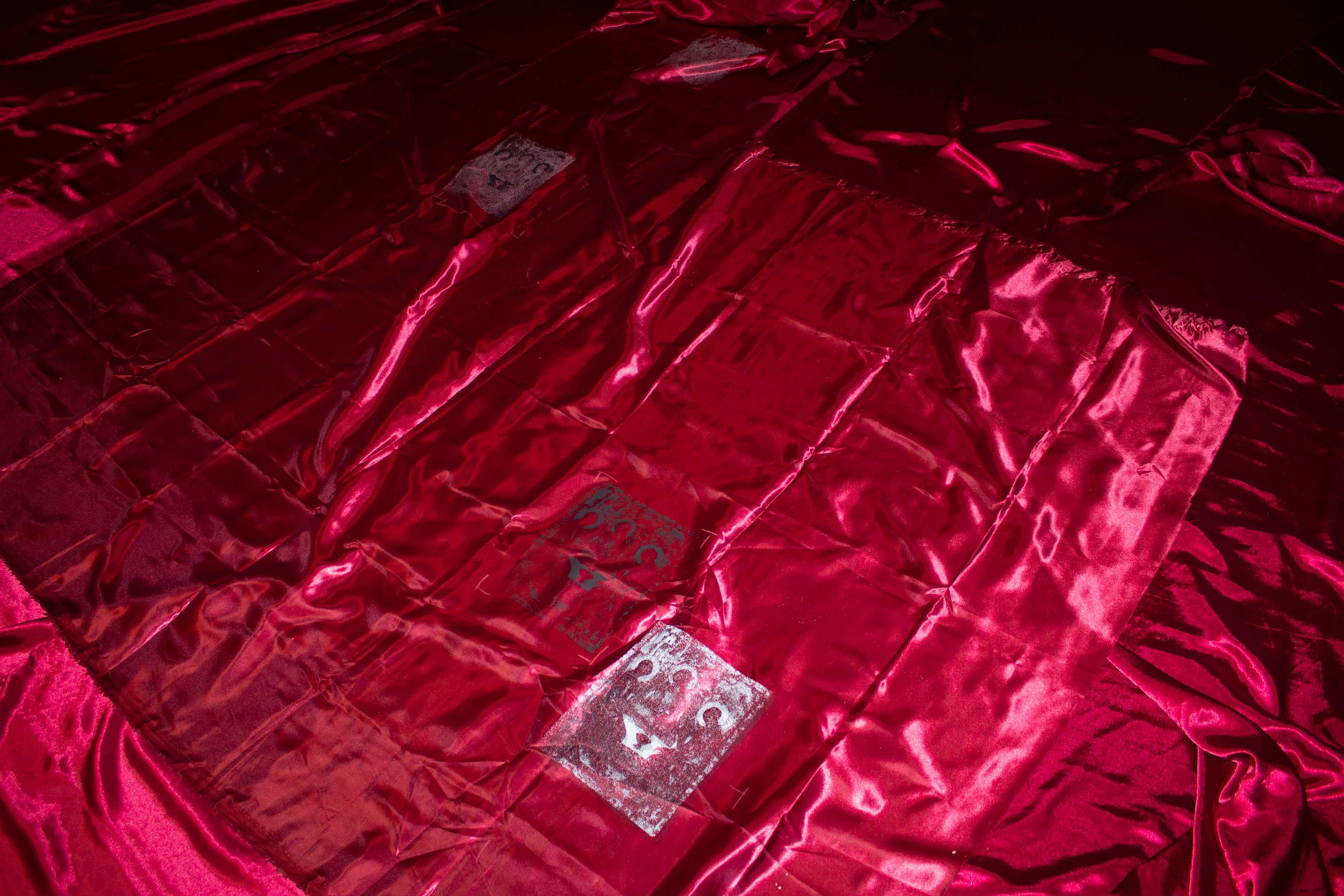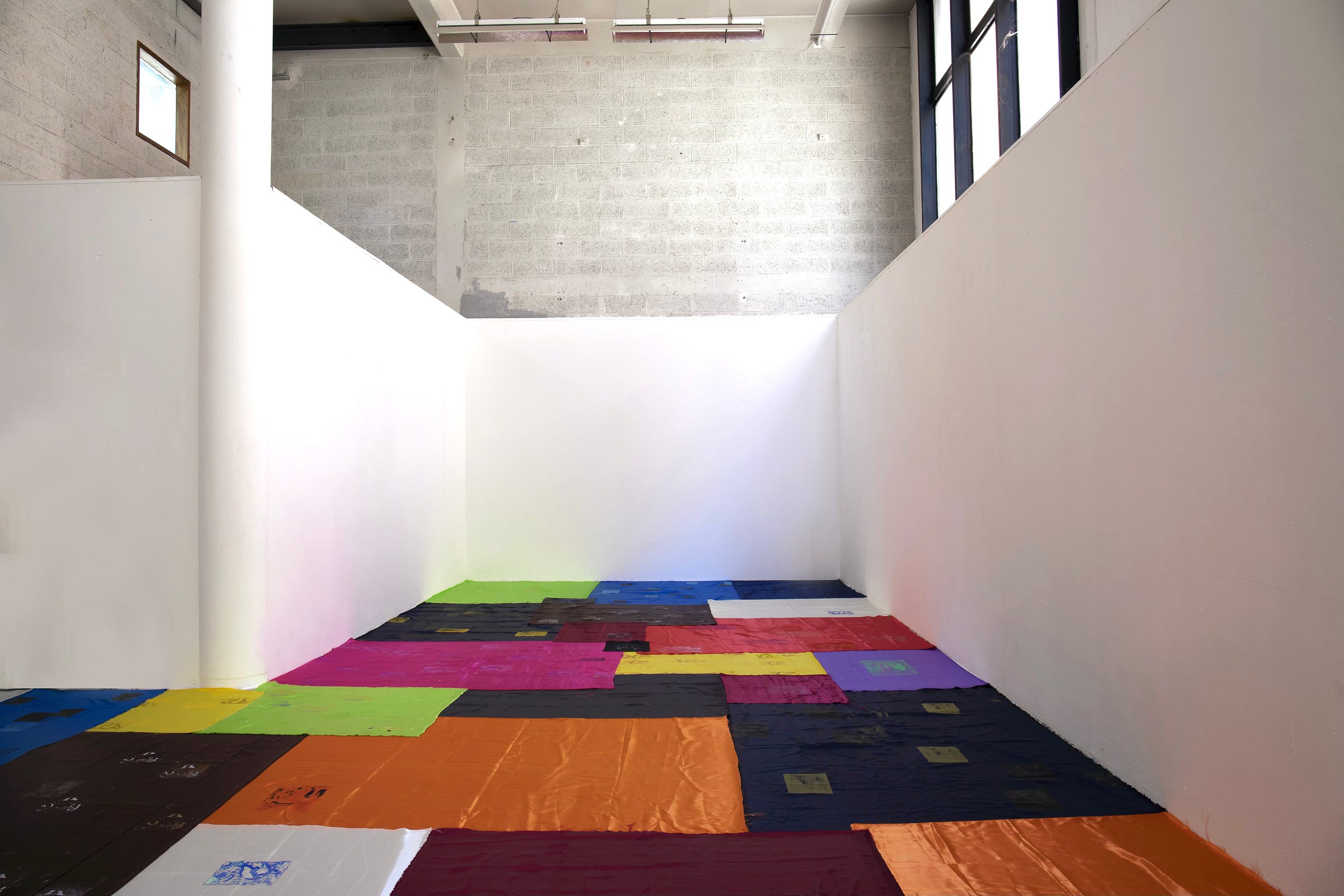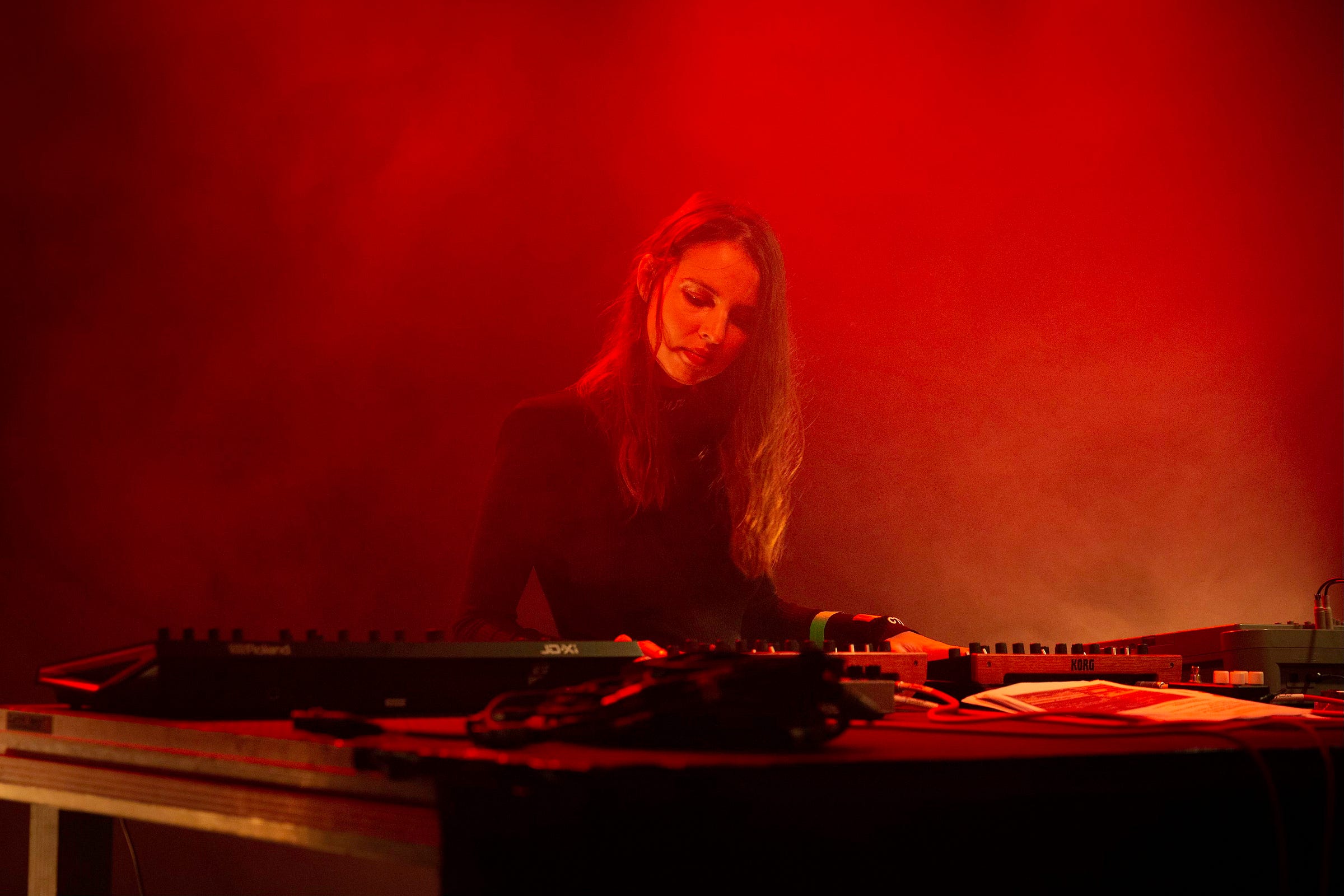at the intersection of holy and unholy, the Paris-based, Minsk-born Lina Filipovich shifts between curating mosaics for religious institutions, weaving foot-long spiritual tapestries, and sacrilegiously deconstructing sound. at first glance, these art forms might seem wildly separate, yet an overarching theme—an imaginative, fantastical world—emerges as Filipovich draws on the details of each medium.
for anyone who looks into her creative space, the mind conjures a portrait, like a mild reaction to everything consumed: a vague silhouette of a feminine figure at nightfall, a saintly mythical creature with a tendency to sin, a solitary being. thereby striking all the right tones that have sustained my interest in the subject matter over the past year since our introduction in early April.
I previously wrote about my fascination with her work in a review of her excellent album, Music for an imaginary dancefloor, released under the London label Blank Mind. I’m thrilled to have her here for a bite-sized interview about her practices. get to know Lina Filipovich.
play Omqroid from Music for an imaginary dancefloor (2024)
+
call of music
on discovering a mode of self-expression beyond words
“I embarked on my own project during my studies in art school in France when I had an idea to create an album of deconstructed orthodox choir music. in a few weeks, the album was made, and in a year, it was released on Time Released Sound. these are the first tracks I have ever written. I realised that I had something to communicate here, other musical ideas to go ahead with, and continue to create.
I explore different media in my art practice, and music is one of them where I feel this fluidity to do things, as well as a clear vision of what I want to express. actually, I like to translate the same ideas between different media and mix them to de-professionalize them and avoid being reduced to just one.
it’s the easiest way to communicate something that will be heard and understood by ‘those very people’ without going into explanations. that’s why it is so important for me to practice art and explore other ways of communication. it’s like a secret language that helps a lot in finding and interacting with like-minded people. If you need to explain, then don’t explain.
I just try to share my personal experience and vision, and demonstrate where I come from and where I want to go.”
+
play afterlife from Spirit Voices (2024)
+
allure of darkness & light
on reflection of personality through thematic audio narratives
“a big part of my journey was working in churches and monasteries, where I created the icons, frescoes, and mosaics, which greatly influenced my art and musical practice, hence my interest in the mystical and the attempt to rediscover my own ‘spirituality.’ the other forms of art/media or just my own journey helps to develop the storyline and enrich the music with extra-musical influences and projections.
for example, the title of the album Music for an imaginary dancefloor was inspired by Cindy Sherman’s Untitled Film Stills and Audrey’s dance in Twin Peaks. and the last EP Spirit Voices is influenced by the works of Gilbert and George, who also worked with religious imagery. my style is in constant evolution, but what unites all of my productions is this search for being between different genres, not being closed in just one.
and I have a love for textures that mix brutality, raw sound, some imperfections and finesse at the same time.”
+
play Magnificat from Magnificat (2021)
+
threads of sound & texture
on the fluidity of multimedia skills
“I think, one of the major connections between my musical and art practice concerns this ‘desacralisation’ aspect, which started with deconstructed choirs and baroque compositions in music and then in recycled icons that I created for religious spaces. the music I made pushed me to search how to explore the same ideas in the field of visual art, which also attracted me a lot.
through both of these mediums, I try to create my personal mythology, a space where my identity is located at the intersection of history, cultural artefacts, memories, emotions, and imagination. it helps me question official narratives, which are often dominated by discourses of power, and to propose personal interpretations situated between a psychological and cultural personal space.”
+
play J. S. Bach - BWV 534 Prelude Fugue in F Minor on BFHC (2022)
+
artistic impulse
on starting a music label
“I created ETRNL to release my own stuff because I felt the desire to release music instinctively when it was still fresh and new for me and see how it would be heard, perceived, and accepted if I shared it directly. when you are working with other labels, it often takes a lot of time, months, even sometimes a year, to bring the music to the audience.”
+
personal space
on the usual, free hours of listening
“recently, my mood was described by one big streaming platform as ‘espace liminal abstract ambient vs indie sleaze synthesizer witch house’. it’s truly that! the latest mix for LYL Radio is a perfect description of what I’m listening to at the moment. I put some of my favorite tracks there from artists I love like lovesliescrushing, Vatican Shadow, Reverie, Andy Stott, Machine Girl, Filmmaker, Brodinski & Qoso, etc. you can find it on my SoundCloud page :)”
+
play Catwalk from Music for an imaginary dancefloor (2024)
a big thank you to Lina Filipovich for sharing her thoughts with me. on that note, this interview marks my final letter before a two-week holiday and some much-needed downtime before the next cycle begins. thank you to everyone who has stuck with me and read these over the past year—it’s been truly rewarding. love to the artists who have contributed along the way. enjoy the season & speak soon. xx








